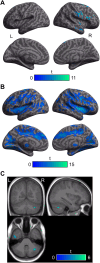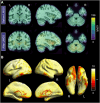A Comparison of Denoising Approaches for Spoken Word Production Related Artefacts in Continuous Multiband fMRI Data
- PMID: 39301209
- PMCID: PMC11410355
- DOI: 10.1162/nol_a_00151
A Comparison of Denoising Approaches for Spoken Word Production Related Artefacts in Continuous Multiband fMRI Data
Abstract
It is well-established from fMRI experiments employing gradient echo echo-planar imaging (EPI) sequences that overt speech production introduces signal artefacts compromising accurate detection of task-related responses. Both design and post-processing (denoising) techniques have been proposed and implemented over the years to mitigate the various noise sources. Recently, fMRI studies of speech production have begun to adopt multiband EPI sequences that offer better signal-to-noise ratio (SNR) and temporal resolution allowing adequate sampling of physiological noise sources (e.g., respiration, cardiovascular effects) and reduced scanner acoustic noise. However, these new sequences may also introduce additional noise sources. In this study, we demonstrate the impact of applying several noise-estimation and removal approaches to continuous multiband fMRI data acquired during a naming-to-definition task, including rigid body motion regression and outlier censoring, principal component analysis for removal of cerebrospinal fluid (CSF)/edge-related noise components, and global fMRI signal regression (using two different approaches) compared to a baseline of realignment and unwarping alone. Our results show the strongest and most spatially extensive sources of physiological noise are the global signal fluctuations arising from respiration and muscle action and CSF/edge-related noise components, with residual rigid body motion contributing relatively little variance. Interestingly, denoising approaches tended to reduce and enhance task-related BOLD signal increases and decreases, respectively. Global signal regression using a voxel-wise linear model of the global signal estimated from unmasked data resulted in dramatic improvements in temporal SNR. Overall, these findings show the benefits of combining continuous multiband EPI sequences and denoising approaches to investigate the neurobiology of speech production.
Keywords: functional magnetic resonance imaging; multiband echoplanar imaging; naming to definitions; spoken word production.
© 2024 Massachusetts Institute of Technology.
Conflict of interest statement
Competing Interests: The authors have declared that no competing interests exist.
Figures






References
LinkOut - more resources
Full Text Sources
